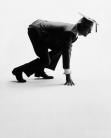The Imperative Passive
The Imperative Passive :
The imperative is the mood of command or request.
1. Hurry!
2. Lie down.
3. Shut the door.
4. Have patience.
5. Light the lamp.
6. Show us the way.
7. Wait a moment.
8. Come to dinner.
The imperative has both voices - active and passive, but only one tense - the present. It has both numbers - the singular and the plural, but only one person - the second. It has the same form for both the singular and the plural.
The imperative active is the verb in its simplest form.
Examples are given above.
The imperative of the verb TO BE is BE. Thus….
1. Be brave.
2. Be careful.
3. Be sure you are right.
4. Be here at noon.
The imperative passive is a verb-phrase consisting of BE and a past participle.
1. Be trusted rather than feared.
2. Study your failures and be instructed by them.
The subject of an imperative is seldom expressed unless it is emphatic.
The subject, when expressed, may precede the imperative such as….You sit here.
Note : In older English, the subject often followed the imperative such as….Go thou, Go you, Hear ye. This use is now confined to the solemn style and to poetry.
The emphatic form of the imperative consists of the imperative DO, followed by the infinitive without to.
1. Do tell me what he said.
2. Do stand still.
The form with DO is often used when the subject is expressed such as…..Do you remain?
Prohibition (or negative command ) is commonly expressed by means of the form with DO.
1. Do not open a closed door without knocking.
2. Do not forget to say “thank you."
In poetry and the solemn style prohibition is often expressed by the simple imperative with NOT.
1. Tell me not what too well I know.
2. Devise not evil against thy neighbor.
3. Seek not to learn my name.
Commands are sometimes expressed in the indicative by means of SHALL or WILL.
1. Thou shalt not steal.
2. You will leave the room immediately.
The Imperative Passive :
The Imperative Passive To HOME PAGE
